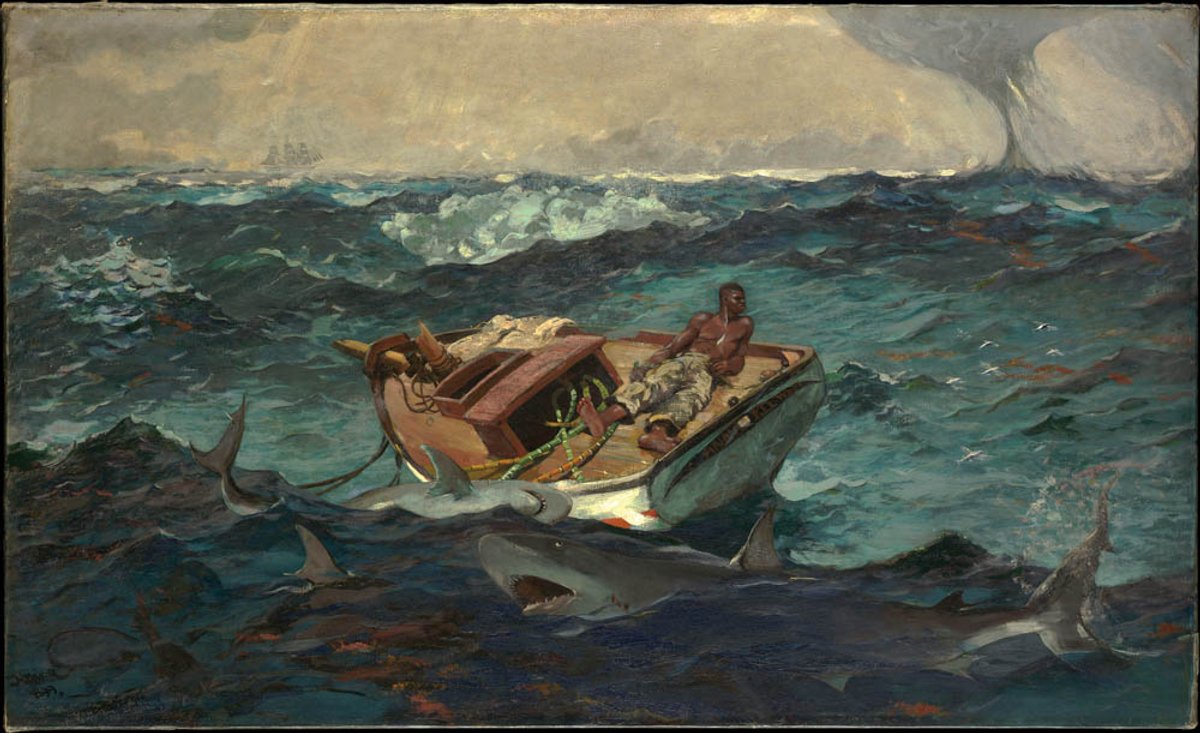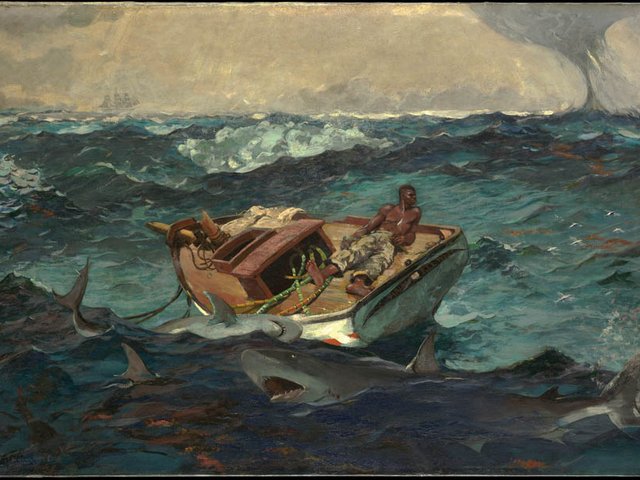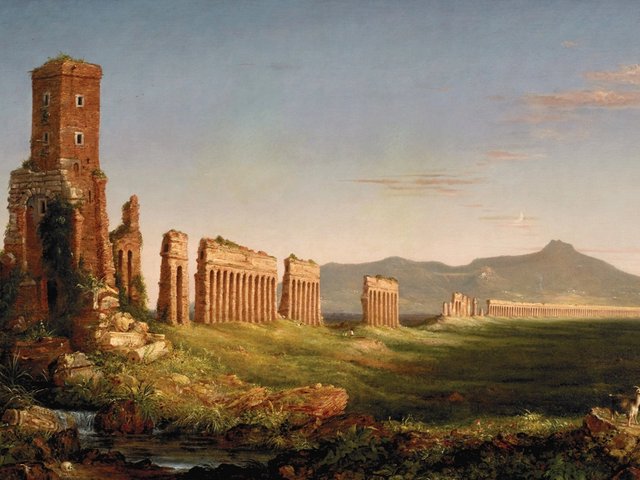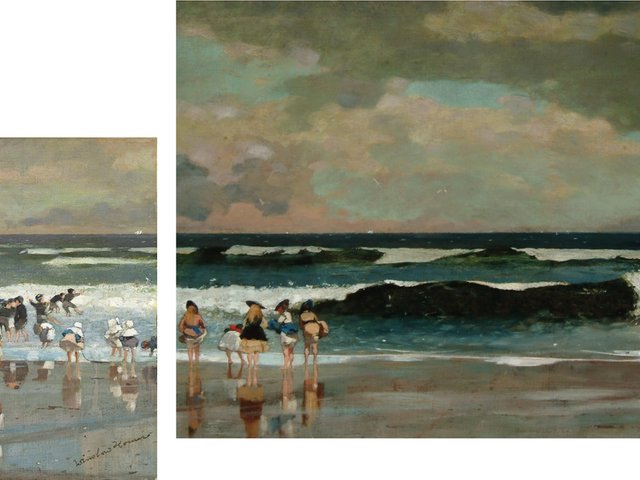Winslow Homer’s depictions of blustery, bucolic New England made him America’s 19th-century regional painter par excellence. But decisive visits to the tropics, a turn in the American South, and an intuitive sense of what the future might hold for America itself combined to make Homer (1836-1910) into an artist of national—even transnational—concern. This larger, lesser-known Homer is the subject of a new exhibition opening this month at New York’s Metropolitan Museum of Art.
The show will include a number of humane works showing the South’s freed slaves in the years around Reconstruction
Winslow Homer: Crosscurrents gives the museum an opportunity to show off two dozen of its own Homer works, including nine fresh from the conservation studio, which the show complements with around 65 loans from US museums and private collections. The exhibition is rich in signature North Atlantic maritime scenes, but the centrepiece is Homer’s 1899 painting The Gulf Stream, which the artist reworked sometime before it entered the Met’s collection in 1906, a few years before his death in 1910, at the age of 74. Set in a rough tropical sea, the uncanny, elemental oil painting shows a Black man adrift in a fishing vessel, surrounded by sharks, and with a dim but perceptible hope of rescue in the form of a ship perched on the horizon.
Long regarded as an outlier, The Gulf Stream, with its narrative pull, was derided as “too anecdotal” in Homer’s own time, says the show’s co-curator, Stephanie Herdrich. Now, she says, it has done nothing less than inspire a whole show, which takes as its themes “the reckoning with slavery and America’s place in the world”. Prompted by the artist’s second trip to the Caribbean, just after the Spanish-American War of 1898, The Gulf Stream will be placed in an interior gallery at the end of a vista, making it the first thing that visitors will see.
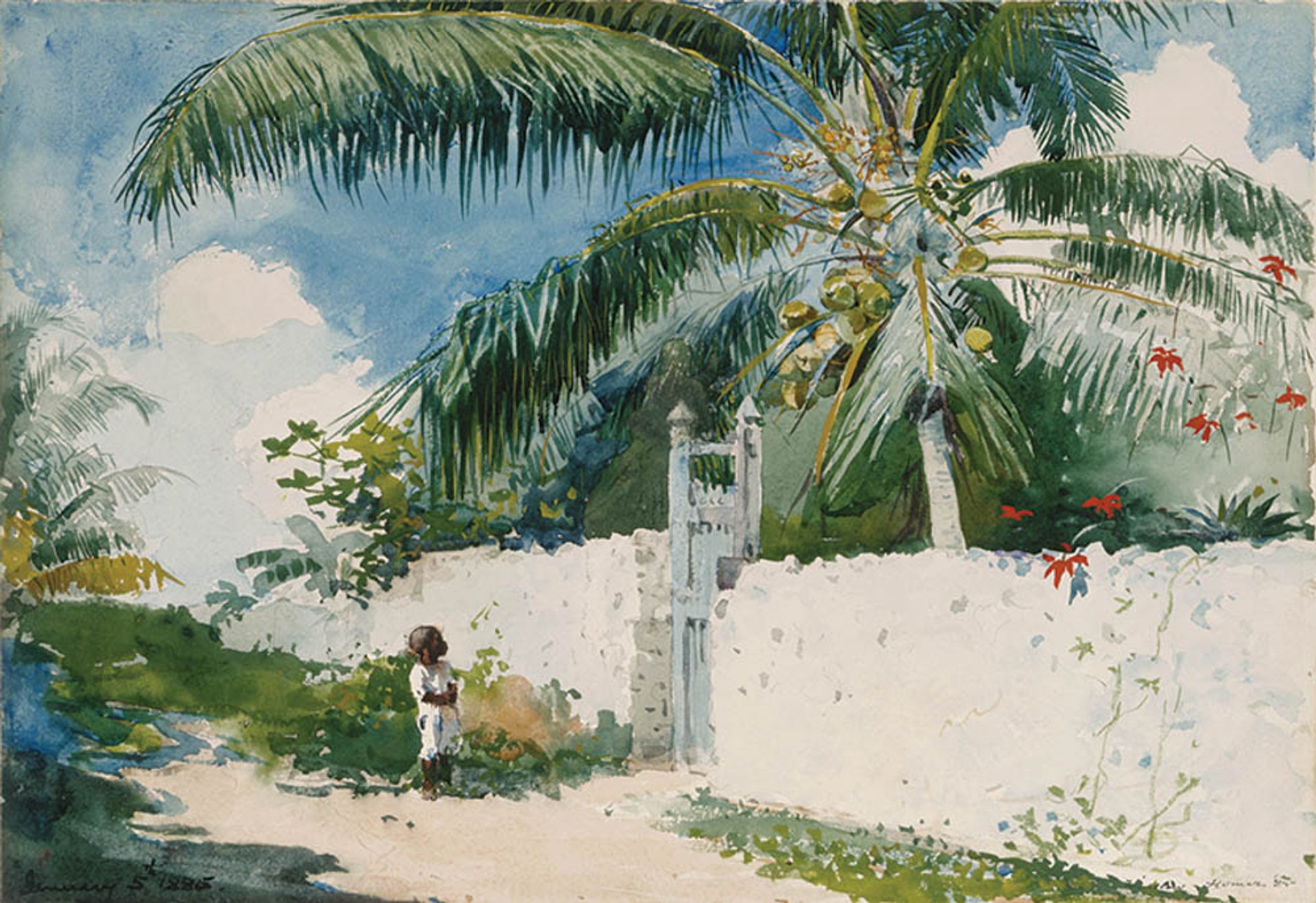
Homer's dazzling A Garden in Nassau (1885) is one of several watercolours of the Caribbean in the exhibition Courtesy of Terra Foundation for American Art, Chicago Art Resource
Arranged both chronologically and thematically, the show will reveal an artist rooted in armed conflict, beginning with paintings of the American Civil War, when Homer transitioned from an illustrator to a self-taught painter, and moving forward to the 1898 war, which launched America as a world power. The Met show will include a number of humane works showing the South’s freed slaves in the years around Reconstruction, including the 1876 painting The Cotton Pickers, on loan from the Los Angeles County Museum of Art.
Works leading up to The Gulf Stream include a number of Caribbean watercolours, such as the ravishing A Garden in Nassau (1885), and an often overlooked painting, now regarded as The Gulf Stream’s companion, called Searchlight on Harbor Entrance, Santiago de Cuba (1902), an unpeopled evocation of the Spanish-American War. The Met’s recent conservation of the painting revealed that Homer had initially included a figure staring out to sea, and its removal gives the finished work “a more symbolic, less narrative aspect”, Herdrich says. The Met conservator Dorothy Mahon says she discovered the sketch of the figure, which Herdrich believes would have been a Spanish soldier, during an infrared examination.
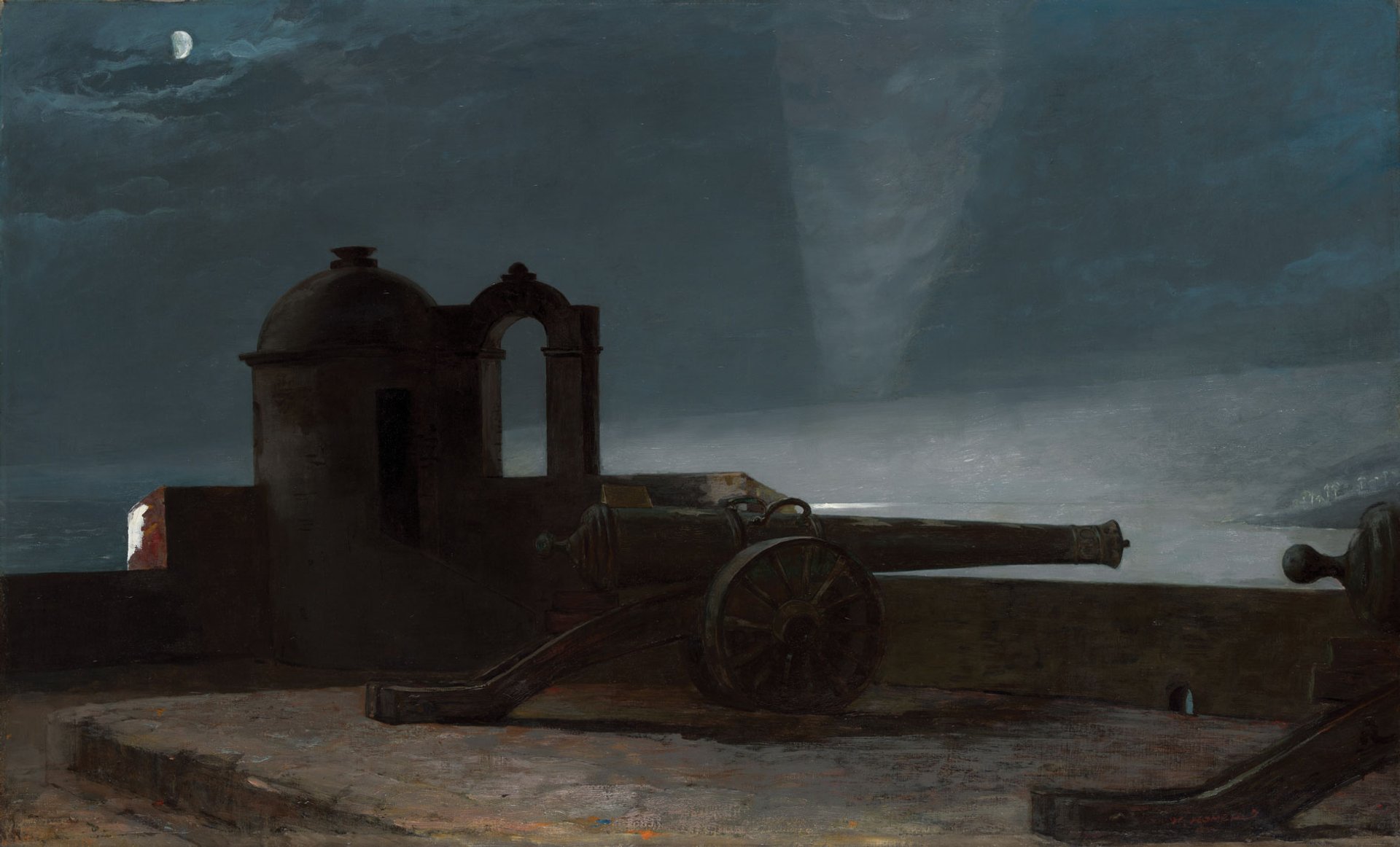
Homer's Searchlight on Harbor Entrance, Santiago de Cuba (1902) Photo courtesy of The Metropolitan Museum of Art
The first major survey of Homer’s career in more than 25 years, the exhibition was the brainchild of the Met director Max Hollein, who helped initiate it not long after he arrived at the museum in 2018. “I got interested because there hadn’t been any major shows about Homer,” he says, comparing the recent fate of the American artist to his German equivalent, Caspar David Friedrich, who is the subject of a monographic show every few years.
Hollein, who grew up in Vienna and worked in Germany before coming to the US, says “Homer is not an artist that Europeans have on their radar.” And Homer’s reintroduction in New York will be followed in the autumn by a European introduction at London’s National Gallery, where a smaller version of the show will open in September.
• Winslow Homer: Crosscurrents, Metropolitan Museum of Art, New York, 11 April-31 July 31; Winslow Homer: Force of Nature, National Gallery, London, 10 September-8 January 2023


